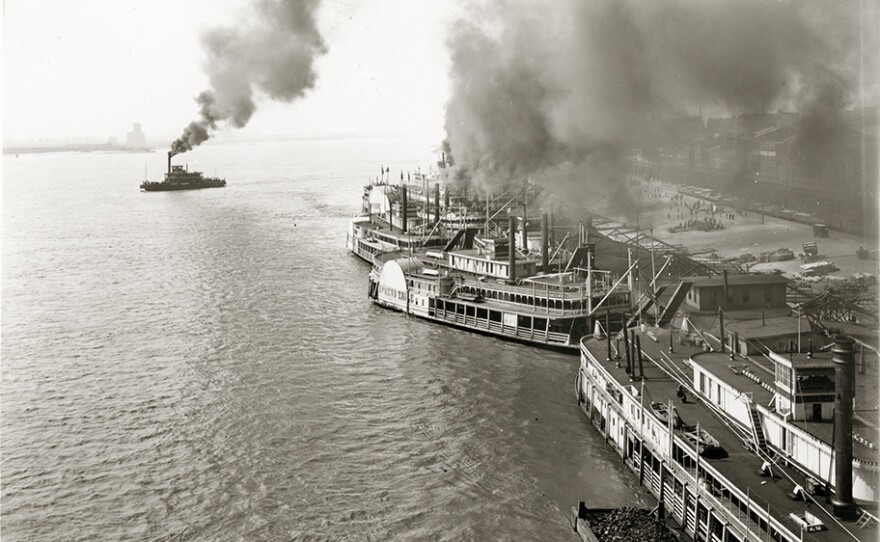To mark the 100th anniversary of St. Louis’ incorporation as a city, an imposing array of “gasbags” assembled at the edge of Forest Park in 1909 for the St. Louis Centennial balloon race.
(A bunch of politicians were there, too.)
Among the chroniclers of the nationally publicized aerial event was photographer Oscar C. Kuehn. His striking image (above) of giant balloons being inflated before the race captured the grand scale of the week-long celebration. According to news accounts in the St. Louis Post-Dispatch an estimated 100,000 people gathered to watch, including nearly 400 “merry mayors” from across the United States and Canada.
The setting was the St. Louis Aero Club’s three-acre airfield at Newstead and Chouteau avenues, conveniently located next to a “gas holder” owned by the Laclede Gas Light Co. The holder, which is visible in the photograph, was filled with pure coal gas the day before the races “so that the most important condition next to good weather will be met,” according to the news story. The gas reservoir – also known as a “gasometer” -- was torn down in 2007.
And so it goes with Kuehn’s photographs. Students of local history might occasionally identify a structure of yesteryear that survived the march of progress, but more often than not Kuehn's images are of places that once were.
The Missouri History Museum has a substantial collection of Kuehn's work, and we came across it again while researching stories for the St. Louis 250th anniversary celebration. We couldn’t resist sharing a few of our favorites here.
Kuehn’s St. Louis was a happening place. His photographs document a city determined to move forward after the 1904 World’s Fair. The temporary palaces of Forest Park had been dismantled and the building materials repurposed, but the daring "aeronauts" and their gas-filled balloons could still draw a crowd. It was a time of change. Flimsy-looking automobiles putt-putted along city streets. Brutish locomotives steamed out of Union Station. Riverboats on the St. Louis levee were on their last hurrah.
Kuehn’s St. Louis was also a splendidly dapper place. Real men -- heck, all men -- wore bowlers and caps because vests and suit coats apparently required a proper topping off, whether one was watching air-filled spheres take flight at Forest Park or fishing in the quiet of Carondelet Park.

Among Kuehn’s achievements, here is one more: In 1914, he helped found the St. Louis Camera Club.
That club, according to president Karen Kotner, has more than 300 members and still meets weekly. She describes the membership as a diverse group of “avid amateurs” who share their work and techniques. In this, its centennial year, the St. Louis Camera Club has put together a collection of its current members’ work. Theexhibit of 50 photographs runs through Aug. 16 at the Sheldon Art Galleries.
If you’d like to see more of Kuehn’s work, here’s a link to a Pinterest collectionput together by Lisa Kuehn Robinson, one of his great-granddaughters.











